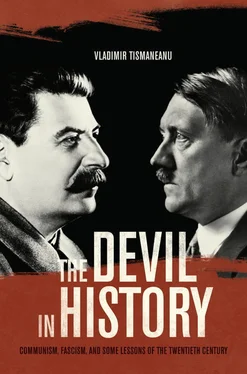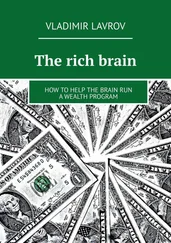At the same time, Sovietization was “part of an imperialist conception, whereby a system of domination and subjugation was effected and rationalized, and whereby a subaltern identity was ascribed to the subjected peoples.” 27The main weakness of this system, however, was its chronic deficit of legitimacy. Under mature Stalinism, both in the Soviet Union and in Eastern Europe, autocratic despotism ruined the functioning of the party as an autonomous institution, its potential for “charismatic impersonalism” inherent in Leninism as an organizational model. This phenomenon explains the neotraditionalist features of Stalinism. If one follows Ken Jowitt’s argument, the mutation of the definition of revolutionary heroism (initially belonging to the party, but now the prerogative of one) cancelled the fundamental characteristic of novelty in Leninism as an ideo-political form of aggregation. 28In this monolithic structure dominated by the revolutionary phalanx, plans to reshape man, nature, and society were frantically pursued. Stalinism as a political religion overturned traditional morality: good and evil, vice and virtue, truth and lie were drastically revalued. The goal was to create a system that unified victim and torturer, that abolished traditional moral taboos and established a different code, with different prescriptions and prohibitions. The dramaturgy of show trials with their “infernal pedagogy” (Annie Kriegel) was the main component of a system based on universal fear, duplicity, and suspicion.
The “oceanic feeling,” the ecstasy of solidarity, the desire to dissolve one’s autonomy into the mystical supra-individual entity of the party, aptly described by Arthur Koestler, was the emotional ground for a chiliastic type of revolutionary commitment. 29In his conversations with Czesław Miłosz, Polish poet Aleksander Wat formulated a memorable evaluation of the phenomenon: “Communism is the enemy of interiorization, of the inner man…. But today we know what exteriorization leads to: the killing of the inner man, and that is the essence of Stalinism. The essence of Stalinism is the poisoning of the inner man so that it becomes shrunken the way headhunters shrink heads—those shriveled little heads—and then disappears entirely…. The inner man must be killed for the communist Decalogue to be lodged in the soul.” 30Community, defined in terms of class, was the antipode of the execrated petty egotism of the bourgeois individual. The self had to be denied in order to achieve real fraternité. Generations of Marxist intellectuals hastened to annihilate their dignity in this apocalyptical race for ultimate certitudes. The whole heritage of Western skeptical rationalism was easily dismissed in the name of the revealed light emanating from the Kremlin. The age of reason was thus to culminate in the frozen universe of quasi-rational terror. Paradoxically, in the aftermath of World War II, Georg Lukács, a paragon of Marxist philosophy and staunch supporter of Bolshevism, wrote a whole treatise accusing Western philosophy of having abandoned humanist traditions in favor of an overall attempt to destroy Reason. 31
The subject, the human being—totally ignored at the level of philosophical discourse—was eventually abolished as a physical entity in the vortex of the “great purges.” Historian Jochen Hellbeck accurately remarked in his analysis of diaries during Stalinism that “an individual living under the Bolshevik system could not conceivably formulate a notion of himself independently of the program promulgated by the Bolshevik state. An individual and the political system in which he lived cannot be viewed as two separate entities.” 32These images were more than metaphors, since metaphor suggests an ineffable face of reality, whereas what happened under Stalin was awfully visible and immediate. Even those diarists who were targets of political campaigns or whose close relatives were victims of the purges tried to align their thought with the official line:
Stalin-era diarists’ desire for a purposeful and significant life reflected a widespread urge to ideologize one’s life, to turn it into the expression of a firm, internally consistent, totalizing Weltanschauung. …The regime was thus able to channel strivings for self-validation and transcendence that emerged outside the ideological boundaries of Bolshevism. In this light, the Soviet project emerges as a variant of a larger European phenomenon of the inter-war period that can be described as a two-fold obligation for a personal world view and for the individuals’ integration into a community…. The power of the Communist appeal, which promised that those who had been slaves in the past could remold themselves into exemplary members of humanity, cannot be overestimated. 33
Under Stalin, the process of establishing one’s identity was fundamentally conditioned by the party-state’s project of radical transformism.
It can be hardly denied that Fascist and Communist regimes were the antithesis of the Western humanist legacy. In the words of Hungarian critical Marxist philosopher Ferenc Fehér, the all-embracing telos of Nazism was “universal conquest which can only conclude either in a collective of the ‘race’ or in the irrelevance of the objective itself when the conquest becomes truly universal.” As for the characteristics of the Communist bestiarum, Fehér listed the following: the everyday drabness of the gulag, the moblike rudeness of its personnel, rudeness as a general atmosphere, a false kind of atheism, and the Jacobin element. Writes Fehér:
It is a strange dialectic that many refined aspects of the Jacobin project serve as a foundation of the outright animal indifference of the bestiarum. The first of them is the legitimation of all inhuman acts in the name of the “future generations,” whose happiness is allegedly at sake. This is a good antidote against the vestiges of a personal conscience. The second is the collective moral slandering of the enemy: belonging to a non-accepted group becomes here a sin which also has the useful side-effect of eliminating the remnants of Christian compassion…. The extension of the bestiarum in “real socialism” cannot be reasonably reduced to the scope of the Gulag proper. The culture created by Stalin, attenuated but left fundamentally unaltered by his heirs and successors, is barbaric precisely in the sense that in it there is no line of demarcation between the bestial and the non-bestial…. Therefore it is not accidental that the only cultural creation in this society has been coming for decades now only from dissidents who are writing about the bestiarum and whose outraged question is precisely this: what have you done to our people? 34
At the same time, François Furet and Pierre Hassner were right to emphasize the nature of Leninism/Stalinism as pathology of universalism, a derailed (devoyé) offspring of the Enlightenment. Naturally, it would be preposterous to restrict ourselves to mere ethical condemnation. But it would not be by any means commendable to gloss over the moral implications of Stalinism or, echoing a famous essay by the young Georg Lukács, the dilemmas of “Bolshevism as a moral problem.” It is important, when pondering the fate of Marxism in the twentieth century, to grasp the split of personalities, the clash between lofty ideals and palpable practices, the methods of the Stalinist terrorist pedagogy in its endeavor to produce a new type of human being whose loyalties and beliefs would be decreed by the party. The revenge of history on its worshippers—thus could be depicted the terrorist psychosis of the Stalinist massacres. To quote sociologist Alvin W. Gouldner’s perceptive interpretation, “The central strategy of the Marxist project, its concern with seeking a remedy to unnecessary suffering, was thus in the end susceptible to a misuse that betrayed its own highest avowals. The root of the trouble was that this conception of its own project redefined pity…. The human condition was rejected on behalf of the historical condition.” 35
Читать дальше












